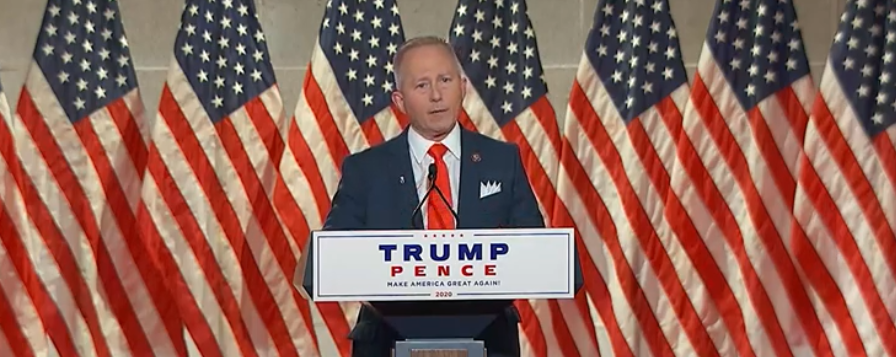Numbers Fun: The GOP Slightly Narrows the Registration Chasm

Morris County Republicans are having a virtual donnybrook over a proposal to give county committee members more power to select candidates. This is happening because Democrats are gaining ground in suburban Morris, which not too long ago was a reliable GOP bastion.
In a somewhat related event, state Sen. Michael Doherty, a statewide conservative leader from Warren County, was asked during a Facebook live session Monday night about Republicans "flipping" the state Senate this fall. They would need to pick up six seats to do that. Doherty seemed more focused on an immediate challenge - holding Senate seats in Districts 16 and 21 where two GOP incumbents are not running again.
With Donald Trump still out there in a sort of limbo - no longer in office, but still a major presence - many observers are talking about the GOP's dilemma in unifying all sides in this quasi, post-Trump world.
Opinions on what Republicans should do are many, but key facts can't be disputed - at least here in New Jersey.
The monthly voter registration report from the state Secretary of State's Office tells a story. A once-a-month report is just that. To add some context, it's worth going back, say, two years, to the February, 2019 report.
For more context, Trump back then had just begun his third year as president and Democrats were fresh from taking four New Jersey House seats. (That includes Jeff Van Drew in CD-2, who won in 2018 as a Democrat, but is now a Republican).
As of Feb. 1, 2019, there were (rounding off the figures), 2,231,000 registered Democrats in the state and 1,293,000 registered Republicans. And as traditionally had been the case, there were more unaffiliated voters, 2,401,000, than anything else.
And notwithstanding Democratic wins in the CD-7 and CD-11 House seats the previous November, the GOP retained a voter registration lead.
In CD-7, there were 165,200 Republicans and 159,200 Democrats. It was more or less the same story in CD-11, where the GOP advantage was 173,000 to 167,500.
Now, let's move to today - or more accurately, Feb. 1.
The first eye-opener is that there are more registered Dems in the state than unaffiliated voters - by a growing margin. The recent report shows 2,537,000 Democrats and 2,425,000 unaffiliated voters. This is more than a 300,000 swing in two years.
For years, if not decades, political observers have been saying, and writing, things like,
"There are more independent voters than anyone else." No longer true in New Jersey.
Democrats also have widened their statewide registration lead from less than a million in 2019 to about 1,080,000; Republicans number 1,458,000.
The trend is the same in the competitive House districts.
In CD-7, Democrats now have almost an 11,000 registration advantage over the GOP. This is a two-year swing of almost 17,000.
In CD-11, it's a swing of about 14,000, as there are now about 8,500 more registered Democrats.
This is a big political year in New Jersey. The governor and all 120 legislative seats are up.
Politics works best when it is truly competitive. So, Republicans have to be searching for a message that can substantially broaden their base. But one would think, there also needs to be an honest review as to why so many new registrants are declaring themselves as "D's."
It can't be simply because Democrats do a better job registering people. After all, both parties conduct registration drives.
I don't expect to dislodge the passion of the former president's loyal supporters, but one may logically blame Trump for the Republicans' sagging fortunes in the state.
When you eschew a long look and compare the statewide registration figures from Jan. 1 of this year to Feb. 1, an interesting tidbit emerges.
Republicans closed the registration gap with Dems over the last month by a bit more than 1,300. They are more than a million behind and still way down from 2019, but the gap did slightly narrow.
That somehow occurred in the month Trump left office.





